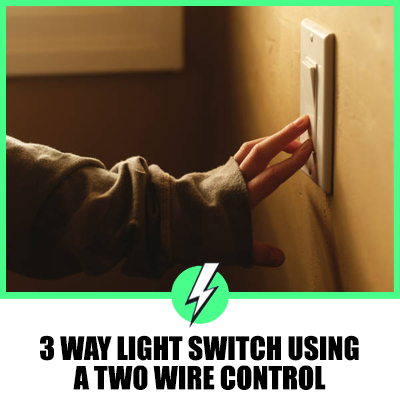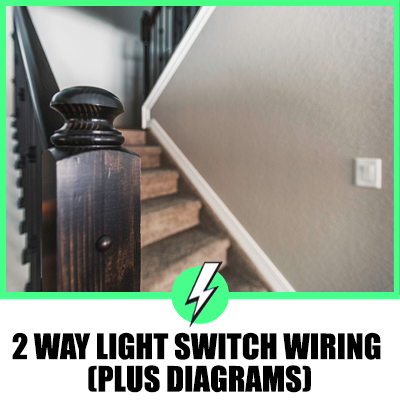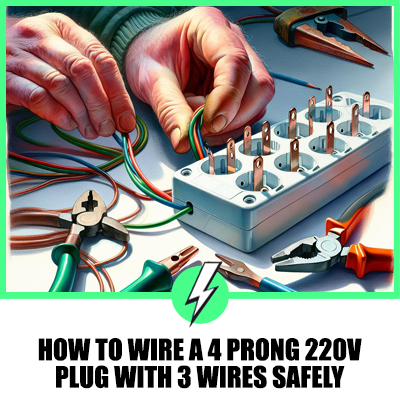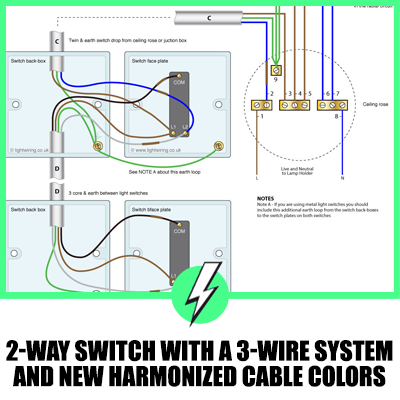Three-Way Lighting Circuit Wiring in the UK
Are you curious about the magic behind three-way lighting circuits in UK homes?
Three-way lighting circuits allow the control of lights from two distinct locations, adding a layer of convenience and functionality to home lighting systems.
This intricate wiring setup, adhering to UK electrical standards, offers a blend of flexibility and safety.
But what goes into the installation, and why is this system so beneficial?
Well, we’ll be going over:
- What exactly is involved in the wiring process of a three-way lighting circuit?
- How do the key components and connections work together to provide this flexibility?
- What are the practical advantages of implementing such a wiring system in your home?
Understanding the nuts and bolts of three-way lighting circuits can illuminate the path to smarter home lighting solutions.
Let’s dive in and explore how this setup enhances both convenience and control.
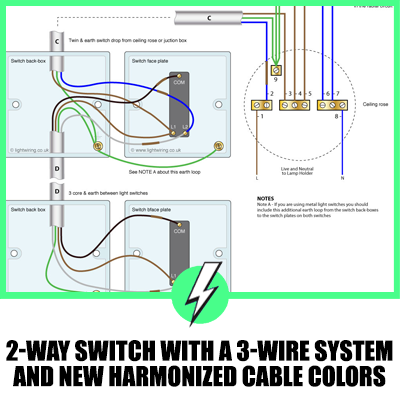
Contents
Understanding Three-Way Lighting Circuit Wiring
Three-way lighting circuit wiring provides the flexibility to control lights from multiple switch locations, offering convenience and ease of use.
It involves specific components and wiring connections to ensure proper functionality and compliance with UK electrical regulations.
Installation Guide for Modern Three-Way Lighting
In residential and many commercial settings, flat Twin&Earth and 3 Core&Earth cables are standard for lighting circuits, including three-way configurations.
It’s crucial to follow the wiring diagram below to ensure proper installation:
3-Way Lighting Circuit Diagram

The installation can be broken down into steps:
Step 1: Start by connecting the first cable from the power source to the light fixture. The light fixture typically provides the necessary terminals for wiring.
If not, use push-in or strip connectors. Connect the supply’s Live (L) wire to the corresponding terminal and the Neutral (N) wire to its terminal, along with the light’s Neutral wire.
Always connect the Earth wires to the designated Earth terminal.
Remember, do not energize this cable until the entire circuit is complete and tested according to BS 7671 standards, including a Safe Isolation Procedure.
Step 2: Run a Twin&Earth cable from the light to the first two-way switch.
Attach the Live (brown) wire to the L terminal, along with the supply’s Live wire, and the blue wire (with brown sleeving) to the switch wire terminal, along with the light’s Live wire.
Ensure the blue wire is marked with brown sleeving to signify its use as a switched Live wire. Connect the Earth wires to the Earth terminal.

Step 3: For the switch connections, use a 3 Core&Earth cable. This cable has three Live wires (brown, grey, and black) and an Earth wire.
Connect the Live wire from the light and the black wire from the 3 Core&Earth cable to the L1 terminal of the first two-way switch.
The blue wire from the light, with brown sleeving, and the grey wire from the 3 Core&Earth cable go to the L2 terminal.
The brown wire from the 3 Core&Earth cable connects to the Common (C) terminal. Ensure all Earth wires are connected to their terminal.

Step 4: Wire the intermediate switch by connecting the black wire from the first two-way switch to its L1 terminal and the grey wire to the L2 terminal.
Join the brown wire to the next cable’s brown wire using connectors, as the intermediate switch lacks a dedicated terminal for the third core.
Then, connect the other end of the 3 Core&Earth cable, with the black wire to the L1 terminal and the grey wire to the L2 terminal of the intermediate switch.
Ensure Earth connections are made.

Step 5: Finally, wire the second two-way switch to the other end of the 3 Core&Earth cable, connecting the black wire to the L1 terminal, the grey wire to the L2 terminal, and the brown wire to the Common (C) terminal.
Ensure Earth connections are made.

Key Components and Connections
- Two Switches: Two three-way switches, also known as intermediate switches, are used in a three-way lighting circuit. These switches are typically installed at different locations to allow control from multiple positions.
- Three-Core and Earth Cable: The three-core and earth cable is employed for the wiring connections. It consists of four individual wires:
- Brown (or red): Live or line wire
- Black: Switched live wire
- Grey: Intermediate wire
- Green/Yellow: Earth wire
- Lighting Point: The lighting point refers to the location where the light or lights are installed. It is connected to the switches using the three-core and earth cable.
Switching Operation
The switching operation in a three-way lighting circuit enables users to control the lights from any of the two switch positions.
When one switch is toggled, it alternates the supply between the two positions, allowing the lights to be turned on or off.
The live wire (brown or red) and the switched live wire (black) are interconnected between the switches, while the intermediate wire (grey) connects the two switches together.
Advantages of Three-Way Lighting Circuit Wiring
- Enhanced Convenience: Three-way lighting circuit wiring offers the convenience of controlling lights from multiple switch locations. Users can easily operate the lights from different entry points within a room or area, increasing flexibility and ease of use.
- Efficient Lighting Control: With three-way switching, users have better control over their lighting, ensuring lights are only used when needed. This promotes energy efficiency and reduces electricity consumption.
- Compliance with Wiring Regulations: Proper installation of three-way lighting circuit wiring adheres to UK wiring regulations and safety standards, ensuring a safe electrical system within the premises.
Conclusion
Three-way lighting circuit wiring is a commonly used electrical configuration in the UK, providing the convenience of controlling lights from multiple switch positions.
By understanding the key components, wiring connections, and switching operation involved, individuals can confidently install or modify lighting circuits in their homes or buildings.
The benefits of enhanced convenience, efficient lighting control, and compliance with electrical regulations make three-way lighting circuit wiring a valuable solution for homeowners.
However, it is crucial to follow proper wiring practices, adhere to safety guidelines, and consult a qualified electrician if needed.
By doing so, users can enjoy reliable and functional lighting control throughout their living spaces.
